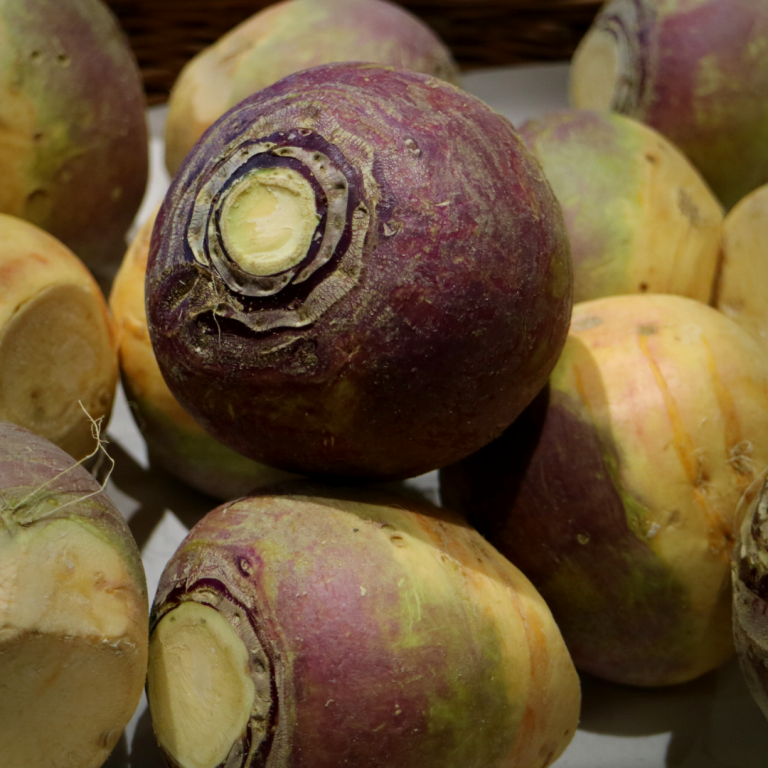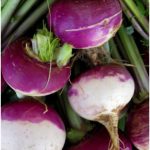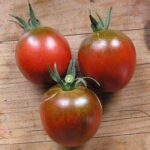Swede – Gowrie
€1.95
Description
Swede – Gowrie is a purple skinned variety with excellent disease resistance and excellent taste. The one to try if you haven’t had success with swedes in the past.
Sowing:
April to June.
Sow one seed per module about 1cm deep and about 4 – 5 weeks later plant out. Note: I found module grown plants vastly superior to direct sown swedes.
Spacing:
Between rows: 30cm
Between plants in the row: 20cm
Approx. seed count: 150
Growing swede:
Latin name:
Brassica napus Napobrassica Group
Family:
Brassicaceae (also known as Cruciferae)
Related to:
Cabbage, Brussesls sprouts, kale, cauliflower, radish, turnip, kohlrabi
Botanical classification:
Brassica derives from the Celtic bresic, the name for cabbage.
Introduction:
Swedes are very closely related to turnips. The name swede is an abbreviation of Swedish turnip. Swedes generally have yellow flesh as opposed to the white flesh of turnips.
Swede – Gowrie is an ideal vegetable for Irish conditions. They prefer the mild and moist conditions and they are also one of the highest yielding vegetables.
History:
It is believed that swedes evolved as a cross of cabbage with turnip, followed by a spontaneous chromosome doubling. This evolution occurred in relatively recent history, probably in Sweden.
Soil and site:
Swede – Gowrie will grow in a range of soils provided they are reasonably fertile. Compost application is highly beneficial. The ideal pH ranges from 6 to 6.8.
Sowing and planting:
In theory, swedes can be sown directly outdoors in drills but you will get much better results if you raise them in modular trays. You sow one seed in each cell 2cm deep and keep the modular tray in a tunnel or on the windowsill. The seeds will germinate within a week and after about 4 weeks they are ready to be hardened off and can then be planted out.
From two sowings you can harvest swedes for many months of the year:
First sowing: mid April
Second sowing: late May
Spacing:
Large swedes:
Between plants: 30cm
Between rows: 30cm
Small swedes:
Between plants: 20cm
Between rows: 30cm
Rotation:
It is absolutely essential to keep swedes in the brassica section of your rotation to prevent a build up of the numerous brassica pests and diseases.
Plant care:
Keep the soil hoed and watered during dry periods. This will prevent the roots from getting tough and woody. You should also check regularly for any signs of pest damage, especially cabbage white butterfly caterpillars.
Harvesting and storage:
From the April sowing, Swede – Gowrie can be harvested as required at whichever size you prefer from around August onwards. The crop which was sown in June is best left in the ground until late October. Then you can either store the roots in boxes of sand or you can risk leaving them in the ground. They can easily withstand some frost but I suggest that if your ground becomes waterlogged in winter you had better store them safely.
Potential problems:
Swedes are susceptible to all the brassica troubles particularly the fleabeetle which can decimate young seed leaves. To minimise this danger you can raise the seedling in modular trays so they are already more established when planted out. Apart from the fleabeetle, swedes grow much healthier than the other brassicas.
How much to grow?
Winter swedes:
If you eat 1 reasonable sized swede per week, storing from October until the end of April (28 weeks) you will need 28 swedes. If you space the seeds 25cm in the row and you fit 4 rows in a bed (bed width: 1.2m) you will get 16 swedes per metre.
In 2 metres you will get enough carrots from October to April.
Summer swedes:
With the early sowing you can plant one meter of a bed to give you 1 swede every week for 12 weeks (from August until the end of October).
Why not subscribe to my monthly gardening newsletter?
https://greenvegetableseeds.com/newsletters/
A good information for all gardening news is the Irish Garden Magazine:




